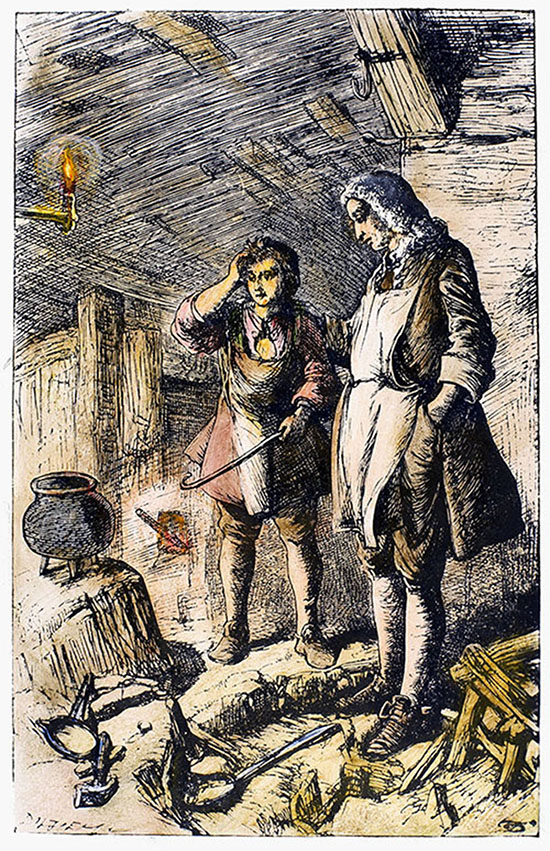 Answer: Abraham Darby I.
Answer: Abraham Darby I.
Abraham Darby (1678-1717) was the first and best known of a succession of men from the Darby family who carried the same name.
Born into an English Quaker family who played an important role in the Industrial Revolution, Darby developed an innovative method of iron smelting. Using coke made from local coal to fuel furnaces rather than charcoal, Darby's discovery made the mass production of cast iron economically viable. With this breakthrough in production, the iron trade in Britain accelerated and local industry began to flourish.
Image: Abraham Darby at his forge and the discovery of cast iron. Etching, English, 19th century.